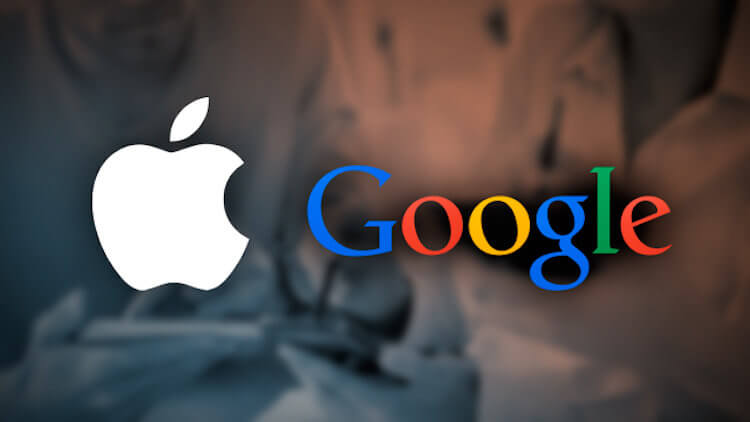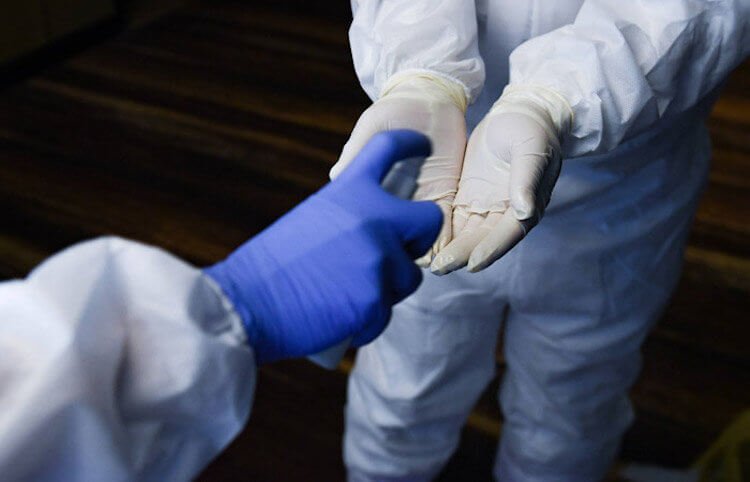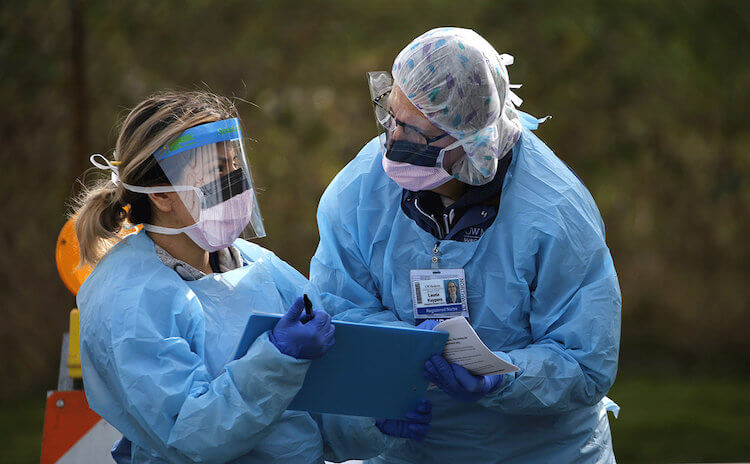Now, when the coronavirus is walking around the world, which led us to a pandemic and made us stay at home, we need weapons in the fight against it. Only a vaccine or at least a medicine can finally help. It's just when they appear, it is not yet clear, but it is necessary to fight the spread now. For this Apple and Google have teamed up and began to prepare a tool that will track the movements of patients and warn healthy ones about it. There was a lot of information on this, but it would be necessary to summarize all this in one material, and at the same time answer the question when all this will work and whether it is worth fearing constant surveillance.

Only together will these companies be able to create a universal tool for tracking the spread of the coronavirus.
Why you need a coronavirus tracking app
To put it quite simply, why do you need to track the movements of people infected with coronavirus, then in order to prevent the disease from spreading. For this, the movements and contacts of people will be recorded throughout the entire time. Then, if a virus is found in one of them, the rest will receive a notification that they have communicated with the carrier, and will be able to take measures to further prevent the spread of the virus as soon as possible.
Many do not believe that all this will work, but personally, the idea seems to me not bad, and only the human factor can prevent its implementation. Most people simply do not want someone to track their movements, even if an impersonal identifier is sent to the server. They think that without this they will not be able to follow, for example, through the services of the navigator. Naive.
In the United States, work is already underway to trace patient contacts. The authorities of the states of California and Massachusetts are asking citizens to write in a diary with whom and when they contacted. So it will be possible to see who the person was in contact with if he is diagnosed positively. Later, this data will be transferred to the common database. It is even believed that it is not necessary to track the movement of all people. A certain amount is enough to break the transmission chains. Figures are named equal to several hundred thousand people.
If an automated system appears, it will be possible not only to quickly notify people that they have contacted patients, but also to find places where such contacts most often occurred.
Collaboration Apple and Google against coronavirus
On April 10, the creators of the operating systems that power almost all smartphones in the world announced that they are developing a tool to track the contacts of infected people. It is a tool, not a service or application. Companies later described it as an engagement notification tool. This best reflects its essence – the tracking process.
The main part of the tool is based on the work of a beacon, which will constantly send data about its owner (its identifier) to the space around it. All devices in its immediate vicinity will anonymously log appointments by recording these IDs.

This small thing, which is not even visible through every microscope, now holds the entire planet in fear.
If one of the users of the system finds out that he has a coronavirus, he will check the corresponding box, and all identifiers with which he has recently spent more than a few minutes at a distance of a couple of meters will receive a notification that they need to be checked. Better to isolate yourself for a period of two weeks minus the number of days that have passed since the meeting.
Companies assure that the data is not only impersonal, by assigning identifiers to users, but also very well encrypted. Third parties who can access them, for example, medical institutions and organizations, in whose applications the tool will be embedded, will receive anonymized data. That is, only the number and identifier, but they will not know exactly who is included in the number of infected, say, in a shopping center.
When will the coronavirus patient tracking system be released?
The tool will be deployed in two steps. In the first phase, this will be tracking through public health systems, and in the second, at the operating system level. For Android and iOS, the corresponding updates will be released and then the system will start working on users' smartphones.

the new tracking tool is only part of the protection measures. But we must not forget about others.
Since early May, public health agencies have access to a preview of this tool, as well as developer platforms Android and iOS. Those planning to formally embed the tool into their applications will be able to do so later this month. Governments that have already launched contact tracing with other apps but want to use this particular tool will have to ditch the system they currently have.
In the next few months Apple and Google will release updates to their operating systems that will have a built-in contact tracing utility. The firmware will be received by all models starting from iPhone 7. There is no such information up to Android, but the update will take place not by downloading a new version of the operating system, but by releasing updates to Google Play services. This will cover a significantly larger number of devices. When the system starts working and appears on smartphones, we will definitely tell you about it in our Telegram news channel.
Confidentiality in Tracking Coronavirus Patients
Companies assure that users will be able to connect to the system at any time and log off at any time. In this case, no personal data will get to the server. Even Apple and Google won't know who is behind any particular ID. Cryptographic identification keys are generated on the device and are the only data used to identify a participant.
And still the movement will not be tracked, but only contacts. That is, situations in which two smartphones are next to each other. However, there is a slight discrepancy. It is unclear how the locations where the flash is detected will be tracked. Most likely, a very rough positioning on cell towers will be used.
Whoever wrote the application and built a tracking tool into it, all data processing will be carried out on the servers Apple and Google. The companies will share the results of this processing only with the governments of the countries – third-party organizations will not even receive anonymized data.

By sharing data, users will not only help themselves, but also unload doctors.
Either way, companies will have to oversee their tracking tool to keep security at a decent level. After all, hackers are resourceful.
How COVID-19 Tracking System From Apple and Google Works
The tool constantly uses the Bluetooth Low Energy technology to communicate with any phones on Android or iOS within a radius of 3-4.5 meters, on which the corresponding tool is also launched. This technology uses so little power that even a switched off phone can send its signal into space for months. This is how the search engine iPhone works via iCloud. The smartphone sends a signal to the network, and neighboring smartphones check it against the information on the server. If the device is marked as missing, the smartphone that picks up the signal will send information about the approximate location of the find to the server and the owner will receive a notification.
To track devices without revealing any confidential information, identification keys are randomly generated every 10–20 minutes – this should help limit any malicious activity in tracking the user's location. When one device sends a request to another within a five-minute period, it registers that device's ID key. If two devices 'ping' each other several times in a row, the information is recorded and the system understands that the two people have spent some time nearby.
When one of the users registers a positive diagnosis of COVID-19 in the application, his identifier is marked on the server as potentially dangerous. Other devices using this tool check the database from time to time and compare it with their contacts over the past days. If a match is found within the past 14 days, the user will be notified that he had a risk of infection on such and such a day. Here the local health authority can connect, which will send information about what to do in this situation.
Two elements will be critical to ensure the tool's success in breaking the transmission chain: increasing availability and reliability in COVID-19 testing, and trusting potential users. Nobody expects that everyone will connect to the system. But the more users there are, the better.
